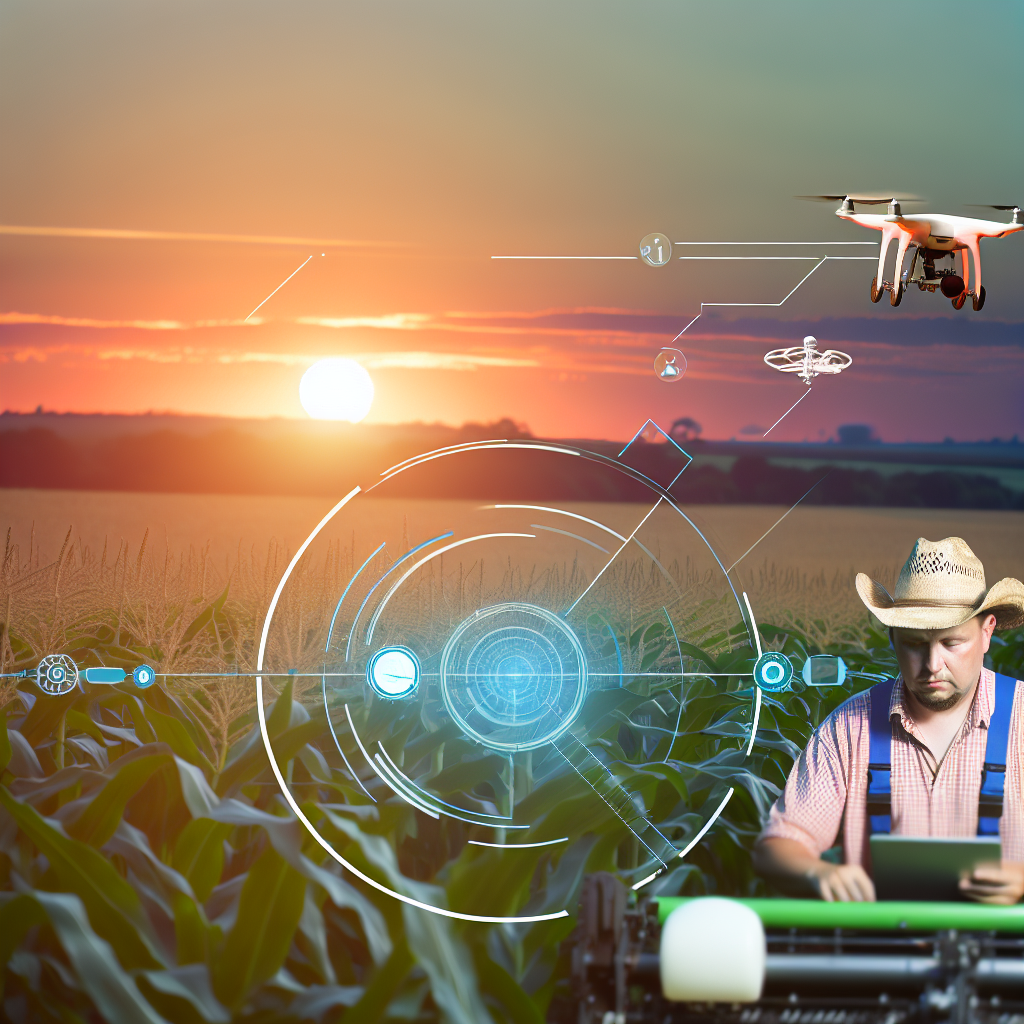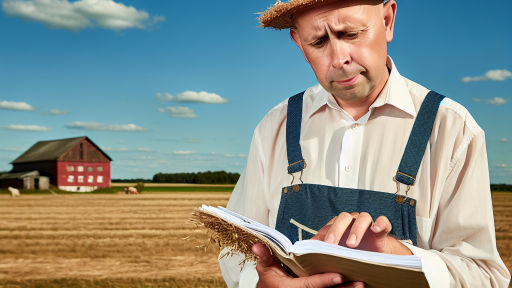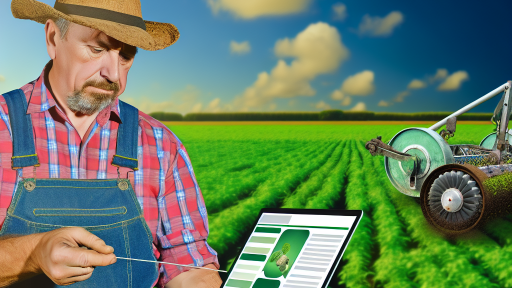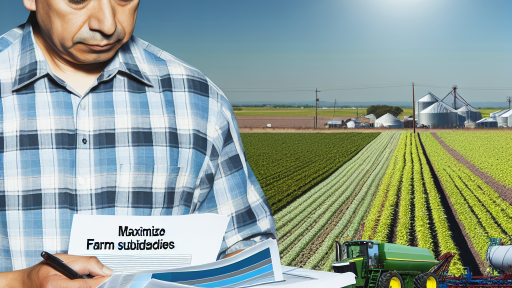Overview of Farming Subsidies
Definition of Farming Subsidies
Farming subsidies are government financial support programs.
They aim to enhance agricultural production and stability.
Subsidies target various aspects of farming, including crop production and livestock management.
Purpose of Farming Subsidies
The main purpose of farming subsidies is to stabilize food prices.
They help support farmers facing economic hardships.
Additionally, subsidies encourage sustainable farming practices.
By promoting certain crops, subsidies influence market dynamics.
They ensure a reliable food supply for the population.
Types of Farming Subsidies
Farming subsidies can be direct payments or price supports.
Direct payments provide farmers with funds based on their crop yield.
Price supports ensure that farmers receive a minimum price for their products.
Furthermore, subsidies can include tax breaks or grants for innovation.
Impact on Modern Farming Practices
Subsidies often drive changes in farming methods and crop selection.
Farmers increasingly adopt technologies that boost efficiency.
Additionally, subsidies encourage practices that improve sustainability.
Transform Your Agribusiness
Unlock your farm's potential with expert advice tailored to your needs. Get actionable steps that drive real results.
Get StartedFarmers are also more willing to invest in automation and precision agriculture.
Historical Context: Evolution of Subsidies in Agriculture
The concept of agricultural subsidies dates back centuries.
Initially, governments offered assistance to stabilize agricultural markets.
During the Great Depression, the U.S. implemented significant subsidy programs.
This aimed to support farmers’ incomes amid falling prices.
Early Developments in Agriculture
In the early 20th century, many countries established farm support schemes.
These programs often targeted specific crops like wheat and corn.
Subsidies became more structured after World War II.
This period saw rapid advancements in farming technology.
Government Responses to Market Fluctuations
As global markets fluctuated, subsidies provided essential stability.
Countries like the United States introduced direct payment systems.
Farmers received monetary support tied to production levels.
Such measures helped maintain food supplies during economic downturns.
Today’s Subsidy Landscape
Modern subsidy programs reflect diverse agricultural needs.
Environmental concerns now play a critical role in policy decisions.
Governments promote sustainable practices through financial incentives.
These policies aim to reduce the environmental footprint of farming.
Impact on Global Agriculture
Subsidies have significantly shaped global agricultural dynamics.
They influence trade relations and pricing in international markets.
Some argue subsidies distort free market competition.
They can lead to overproduction or underproduction in different regions.
Types of Subsidies and Their Applications in Modern Farming
Direct Payment Subsidies
Direct payment subsidies provide farmers with funds based on their historical production levels.
These subsidies aim to stabilize farmers’ incomes during volatile market conditions.
For instance, the U.S. government offers direct payments to corn and soybean growers.
Showcase Your Farming Business
Publish your professional farming services profile on our blog for a one-time fee of $200 and reach a dedicated audience of farmers and agribusiness owners.
Publish Your ProfileFarmers can use these funds to invest in better equipment and technology.
Crop Insurance Subsidies
Crop insurance subsidies help farmers mitigate risks linked to natural disasters.
These subsidies lower the premiums farmers must pay for insurance coverage.
In turn, this encourages farmers to protect their crops against unforeseen events.
Consequently, farmers can focus on productivity rather than worrying about losses.
Conservation Subsidies
Conservation subsidies incentivize environmentally friendly farming practices.
They support initiatives such as soil erosion control and habitat restoration.
Farmers who adopt sustainable methods can receive financial assistance.
Through these subsidies, agriculture becomes more aligned with environmental goals.
Research and Development Subsidies
Research and development subsidies fuel innovation in the agricultural sector.
These subsidies fund projects aimed at improving crop yields and pest resistance.
Universities and corporations often partner with governments for these initiatives.
The outcome can lead to breakthroughs that significantly benefit modern farming.
Price Support Subsidies
Price support subsidies guarantee a minimum price for specific agricultural products.
This mechanism ensures that farmers receive fair compensation for their efforts.
It stabilizes prices and can improve food security in the long run.
Farmers are more likely to invest in their operations when assured of stable incomes.
Challenges of Subsidies
While subsidies support farming, they can also lead to market distortions.
For example, over-reliance on subsidies may reduce farmers’ motivation to innovate.
Moreover, subsidies can favor large agribusinesses over smaller family farms.
These challenges caution against overly aggressive subsidy programs.
See Related Content: Common Mistakes When Applying for Farm Aid
Economic Impact of Subsidies on Farm Income and Sustainability
Boosting Farm Income
Subsidies significantly increase farmers’ incomes across various sectors.
These financial supports come directly from government programs.
As a result, farmers can invest more in their operations.
Farmers like Clara Thompson have expanded their operations with subsidy assistance.
Moreover, subsidies can enhance crop yields and profitability.
Encouraging Sustainable Practices
Subsidies also promote sustainable farming practices among farmers.
Governments often tie subsidies to environmentally friendly methods.
This support encourages the adoption of practices like crop rotation and organic farming.
Farmers adopting these methods contribute to long-term ecological health.
In many cases, sustainable practices lead to reduced input costs.
Market Stability and Price Support
Subsidies help stabilize farm income during volatile market conditions.
During periods of low crop prices, subsidies cushion financial blows.
This stability encourages farmers to continue production despite market challenges.
For instance, dairy farmers received crucial support in 2022 due to declining prices.
Such assistance is essential for maintaining a constant food supply.
Challenges and Criticisms
Despite benefits, subsidies face various criticisms and challenges.
Some argue they distort market dynamics and create dependency.
Certain farmers may rely heavily on these supports rather than market forces.
Showcase Your Farming Business
Publish your professional farming services profile on our blog for a one-time fee of $200 and reach a dedicated audience of farmers and agribusiness owners.
Publish Your ProfileMoreover, large agribusinesses often benefit more than small family farms.
This can widen the income gap within the agricultural sector.
Future Directions for Subsidy Programs
To enhance sustainability, subsidy programs must evolve.
Policymakers should focus on equitable distribution of funds.
Additionally, they must ensure support for environmentally beneficial practices.
Future programs could include incentives for technology adoption.
These shifts will help create a more balanced and sustainable agricultural economy.
Uncover the Details: Financial Assistance Resources for New Farmers
Social Implications: Effects on Rural Communities and Employment
Changes in Rural Employment
Subsidies shape employment patterns in rural areas.
They provide financial security to farmers and encourage hiring.
This often leads to an increase in seasonal workers.
Consequently, more jobs become available in farming and related sectors.
Nevertheless, not all employment effects are positive.
Large agribusinesses may outcompete small farms, leading to job losses.
Many small-holder farmers struggle to retain staff as subsidies favor larger operations.
Impact on Rural Communities
Subsidies contribute to community sustainability and growth.
They support local economies by maintaining food production.
Moreover, this stability attracts new residents to rural regions.
In turn, this influx can bolster local services and businesses.
Furthermore, community cohesion improves with stable agricultural employment.
On the downside, reliance on subsidies can create economic disparities.
Communities heavily reliant on subsidies may face challenges during policy shifts.
Shifts in Farming Practices
Subsidies often influence the types of crops grown.
Farmers may prefer cash crops due to guaranteed income.
This can result in monocultures, impacting rural biodiversity.
In addition, subsidies can encourage intensive farming methods.
While this increases output, it can degrade soil health over time.
Ultimately, this affects long-term sustainability for many communities.
Complications in the Labor Market
The agricultural labor market faces unique challenges.
Subsidies can distort wages and job availability.
When external funding decreases, so do jobs and income stability.
Farmers may have to adjust their hiring practices accordingly.
Moreover, fluctuating subsidies can create uncertainty for workers.
Many individuals may seek alternative employment as a result.
Community Initiatives and Response
In response to changes, communities often band together.
Cooperatives and local organizations can mitigate subsidy impacts.
They offer resources and support to struggling farmers.
Through collaboration, communities can foster resilience.
Additionally, educational programs help farmers adapt to new practices.
Such initiatives ensure that rural economies remain viable.
Showcase Your Farming Business
Publish your professional farming services profile on our blog for a one-time fee of $200 and reach a dedicated audience of farmers and agribusiness owners.
Publish Your ProfileExplore Further: Comparing Different Farm Subsidy Programs

Environmental Consequences: Promoting or Hindering Sustainable Practices
Influence of Subsidies on Environmental Practices
Subsidies can significantly affect farming sustainability.
They may encourage farmers to adopt eco-friendly practices.
Conversely, some subsidies support conventional methods.
It’s essential to analyze their long-term impact on the environment.
Promoting Sustainable Practices
Some subsidies reward farmers for adopting sustainable methods.
For instance, payments for reducing chemical fertilizers exist.
This strategy encourages soil health and biodiversity protection.
Moreover, grants for renewable energy installations benefit farmers.
Such initiatives foster energy independence and lower emissions.
Hindering Sustainable Development
In contrast, certain subsidies can hinder sustainable practices.
They often prioritize high-yield crops over environmental health.
This focus can lead to soil degradation and habitat loss.
Additionally, subsidies for water-intensive crops increase resource depletion.
Case Studies on Subsidy Impact
Various regions illustrate the dual impact of subsidies.
In California, incentives for organic farming increased sustainability.
Farmers reported improved soil quality and reduced pest issues.
However, in the Midwest, corn and soybean subsidies dominated.
This trend led to monocultures and decreased biodiversity.
Future Directions for Policy Making
Policy makers must re-evaluate subsidy structures.
Encouraging mixed cropping systems can enhance ecological health.
Additionally, supporting organic farming provides long-term benefits.
Creating policies that favor sustainable practices should be a priority.
Farmers and environmentalists must collaborate for effective solutions.
Uncover the Details: Accessing Emergency Financial Aid for Farms
The Role of Technology and Innovation in Conjunction with Subsidies
Enhancing Agricultural Efficiency
Technology significantly enhances agricultural efficiency.
It streamlines planting, harvesting, and distribution processes.
Innovative practices minimize resource usage while maximizing yield.
For instance, precision agriculture employs data analytics to optimize inputs.
Farmers gain access to real-time information regarding soil conditions.
This knowledge empowers them to make informed decisions.
Subsidies Fueling Technological Adoption
Subsidies encourage the adoption of advanced technologies.
Financial support reduces the cost barriers for farmers.
Government programs promote research and development in agriculture.
For example, the AgTech Innovation Grant assists startups in farming technology.
This initiative fosters new solutions to persistent challenges.
Consequently, farmers can more readily implement innovative tools.
Improving Sustainability through Technology
Technological advancements drive sustainable farming practices.
Smart irrigation systems conserve water while maintaining crop health.
Biotechnology enables crop resilience against pests and diseases.
Showcase Your Farming Business
Publish your professional farming services profile on our blog for a one-time fee of $200 and reach a dedicated audience of farmers and agribusiness owners.
Publish Your ProfileFarmers reduce chemical usage, benefiting both the environment and economy.
Additionally, technology allows for better monitoring of farm conditions.
This oversight ensures that farmers can respond quickly to changes.
The Future of Farming Practices
As technology continues to evolve, farming practices advance.
The integration of drones for crop monitoring is a prominent example.
Drones facilitate aerial surveys, enhancing decision-making processes.
Moreover, artificial intelligence streamlines supply chain management.
Farmers can predict market demands more accurately.
Such advancements position agriculture for sustainable growth moving forward.
Case Studies of Subsidy Programs
Successful Subsidy Programs
In the Netherlands, the dairy subsidy program has shown impressive results.
This initiative supports local farmers by providing financial incentives.
Consequently, there has been a significant increase in milk production.
Farmers can invest in better technology and sustainable practices.
Moreover, the program successfully promotes environmental stewardship.
Thus, the dairy sector remains robust and competitive in global markets.
Unsuccessful Subsidy Programs
In contrast, India’s wheat subsidy program faced several challenges.
The initiative aimed to stabilize prices for farmers significantly.
However, it often led to overproduction and wastage of resources.
This inefficiency ultimately strained government budgets.
Additionally, smaller farmers frequently did not benefit equally.
As a result, disparities in income among farmers increased.
Comparative Analysis
Both case studies underline the importance of planning.
Effective subsidy programs require clear goals and structured implementation.
Moreover, regular monitoring can help adjust policies as needed.
Lessons learned can guide future initiatives in different regions.
Ultimately, understanding local contexts remains crucial for success.
International Perspectives
Various countries showcase different approaches to agricultural subsidies.
For example, the European Union’s Common Agricultural Policy supports farmers comprehensively.
This policy balances financial assistance and environmental regulations.
Conversely, Brazil’s subsidy schemes have sometimes led to deforestation.
This demonstrates the need for sustainable practices in subsidy distribution.
Learning from these international experiences can enhance future frameworks.
Additional Resources
Precision Agriculture: Benefits and Challenges for Technology …




